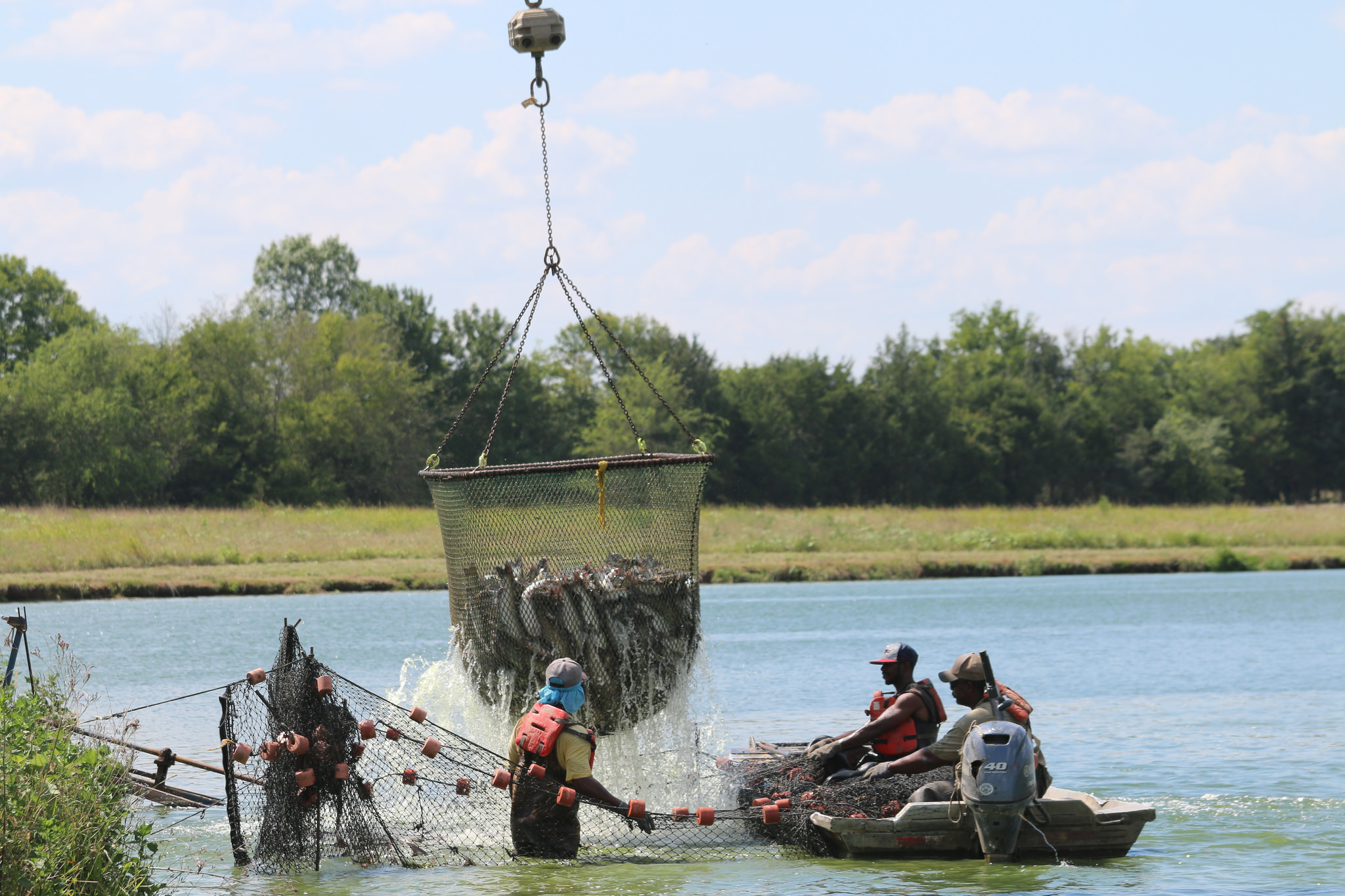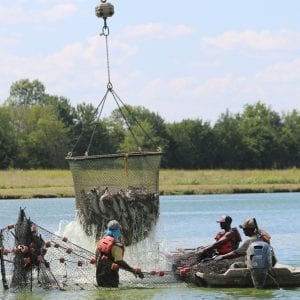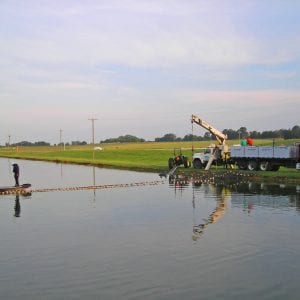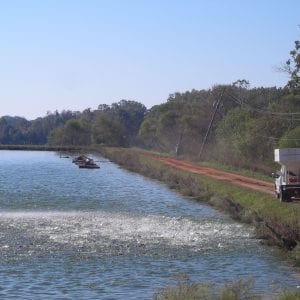Aquaculture

U.S. farm-raised catfish is the eighth most popular item of all fish and seafood products consumed in the United States. Americans eat 16.1 pounds of fish and seafood per person per year, and each American eats 0.60 pounds of U.S. farm-raised catfish annually.
Alabama ranks sixth in U.S. aquaculture (including catfish) sales, at $95 million. In 2020, the U.S. farm-raised catfish industry produced 324 million pounds of catfish from 59,305 acres of water. Alabama produced 94 million pounds, worth $99 million, from 16,146 acres representing 33 percent of all catfish produced in the United States.
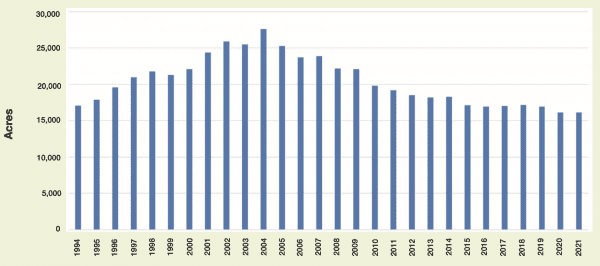
Historical Catfish Production Acreage in Alabama 1994–2021
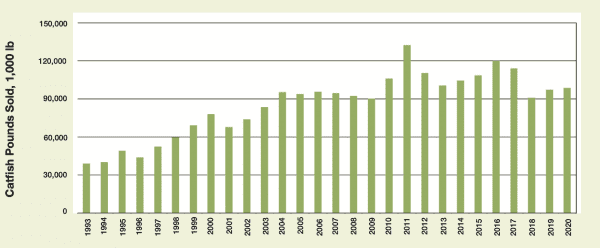
Historical Catfish Foodsize Sales in Alabama 1993–2020
Alabama Catfish Industry Statistics 2020
| County | Farm Number | 2020 Acreage | % Total Acreage |
|---|---|---|---|
| Dallas | 5 | 3,632 | 22.7 |
| Greene | 10 | 2,997 | 18.7 |
| Hale | 29 | 6,713 | 41.9 |
| Marengo | 4 | 486 | 3.0 |
| Perry | 13 | 1,578 | 9.1 |
| Pickens | 2 | 249 | 1.6 |
| Sumter | 3 | 491 | 3.0 |
| Total | 66 | 16,146 | 100 |
Alabama Catfish Industry Faces Serious Issues
In the early 2000s, more than 25,000 water acres were in production in Alabama, including approximately 250 catfish farms in western Alabama and four processors. By 2020, this declined to 66 farms; 16,146 water acres; and two remaining catfish processors in the state.
Why the decline?
- Feed prices: The 2020 feed price ($ 388 per ton) was $14 per ton above the 2019 price. Since August 2020, the feed price has increased by 18% (to $451 per ton) due to high soybean and corn prices.
- Competition: Inexpensive imports (mainly from Vietnam and China) flooded the U.S. marketplace with alternative catfish-like products, such as tra, swai, basa, and tilapia.
- Other economic forces: The U.S. round weight processed in 2020 (317 million lb) was 7% lower than in 2019. This could be due to the COVID-19 pandemic and the decline in food service and restaurant sales. In early 2021, this situation has been improving.
- Disease losses: Annual production losses have been greater than $13 million annually over the last 13 years due to bacterial diseases, representing the biggest challenge to the Alabama catfish industry. Losses have been particularly heavy due to a virulent strain of Aeromonas hydrophila bacteria introduced from China.
- Fish size: Included in the harvest recently have been excessive amounts of large fish too big for the processor to accept.
2020 Economic Impacts
Total U.S. catfish industry producer income in 2020 was $371 million and Alabama’s producer income was $109 million or 29 percent of the entire U.S. catfish industry.
Two catfish processing plants are located in western Alabama: one in Uniontown (Perry County) and one in Eutaw (Greene County). There are two catfish feed mills in western Alabama: Uniontown (Perry County) and Demopolis (Marengo County).
The 2020 Economic Impact of the Farm-Raised Catfish Industry to Alabama, including catfish production, feed manufacturing, and processing, reports the following:
- Total output (sales) – $307 million
- Total employment – 2,442 (Jobs)
- Total value added – $92 million
- Figure 1. Catfish harvest in western Alabama. (Photo credit: Alabama Farmers Federation)
- Figure 2. Preparing for a commercial catfish harvest in Uniontown, Alabama.
- Figure 3. Feeding catfish on a commercial farm in Browns, Alabama.
Alabama Catfish Producers Partner with School Culinary Programs

Alabama Catfish Producers State Chairman Sid Nelson delivered catfish fillets to the Tuscaloosa Career & Technology Academy (TCTA) as part of the Catfish Culinary Challenge. From left are TCTA students Shan Brown and DeAsia Tyson; Culinary Instructor Joan King; Nelson of Sumter County; and students Lartravius Jones and Brandon Dunlap. (Photo credit: Alabama Farmers Federation)
Alabama’s 2020 Catfish Farmer of the Year

Luke Smelley, who farms in Perry County, was named Alabama’s Catfish Farmer of the Year in 2020. (Photo credit: Alabama Farmers Federation)
Download a PDF of 2020 Alabama Farm-Raised Catfish Industry Highlights, ANR-2441.

